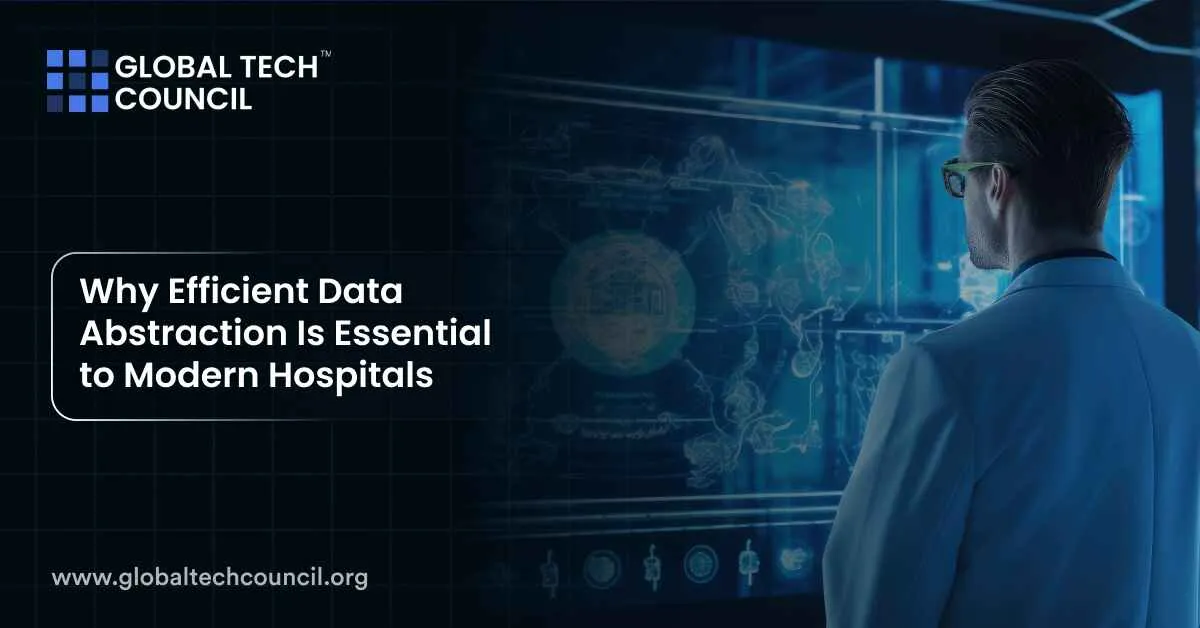 In a hospital environment where every second counts and patient health is at the forefront, the process of data abstraction is all too easy to overlook. This painstaking process of searching through patient files to uncover specific, relevant information is essential.
In a hospital environment where every second counts and patient health is at the forefront, the process of data abstraction is all too easy to overlook. This painstaking process of searching through patient files to uncover specific, relevant information is essential.
In reality, data abstraction is the behind-the-scenes hero that allows hospitals to deliver better care, drive meaningful improvements, and navigate the complicated landscape of healthcare regulations.
What Is Data Abstraction In Healthcare?
Consider a patient’s medical record as a complete narrative. It’s filled with important data, from diagnoses and treatments to lab results and medications.
Data abstraction carefully reads this narrative to identify key sentences or phrases and independent data points to build an ordered summary. This is not copy and paste, but interpreting the context, categorizing the information, and coding it in a standardized format so that it can be readily analyzed and utilized for purposes beyond real-time patient care.
Why is this work so imperative?
Try to picture conducting a study on the quality of trauma care by manually going through thousands of individual patient records. The time and resources involved would be out of the question, and human error is a strong possibility. That is where good data abstraction comes in, turning a haystack of disorganized information into an organized, usable dataset that makes managing a trauma registry easier.
Better Care
The advantages flow through the entire healthcare system.
For improved patient care, readily available abstracted data allows physicians to quickly identify trends in a patient’s history, understand the nuances of their illness, and make more precise diagnoses and treatment plan decisions. Imagine a doctor being able to quickly review a brief report of a patient’s previous adverse drug reactions – this kind of efficiency can be life-saving.
Higher Quality Research
Moreover, quality improvement initiatives and enhanced research activities thrive with well-abstracted data.
Through the analysis of aggregated, standardized data, hospitals can:
- Identify patterns in disease progression
- Evaluate the relative strengths of different treatments
- Identify where process improvement is possible
Data-driven methodology fuels ongoing quality improvement, enhancing patient outcomes and more effective delivery of care.
Strict Compliance
Aside from internal optimization, regulatory compliance is another critical area where sound data abstraction makes a huge difference.
Hospitals must report certain data to regulatory bodies like the Centers for Medicare & Medicaid Services (CMS) and The Joint Commission. Timely and proper data abstraction guarantees reporting compliance, preventing possible financial penalties and reputational damage.
Effective Resource Utilization
The impact extends to resource maximization.
By reviewing how resources are used, such as length of stay or utilization of certain equipment, hospitals can identify resource waste and distribute resources more effectively, thus saving unnecessary expenditures.
This allows for precious health care dollars to be spent where they’re most needed.
Increased Workflow
Quality data abstraction contributes to streamlined processes.
Automation may be used to accelerate the abstraction process and streamline data entry to conserve healthcare professionals’ time, freeing them up to focus on what truly matters: direct patient care. It also eliminates the risk of human error, leading to better and consistent data.
Good data abstraction also establishes a culture of data-driven decision-making within the hospital.
Healthcare executives have access to sound, scrutinized data on which to base smart decisions on personnel matters through the acquisition of new tech. This provides for higher-caliber, less costly healthcare provisioning all the way around.
Enhance Your Hospital’s Data Abstraction Process
Data abstraction is essential to the achievements of modern-day hospitals.
It’s a critical bridge between raw patient data and actionable insights. It helps hospitals provide better patient care, facilitate valuable research and quality initiatives, ensure compliance, optimize resources, and ultimately, build a better, more efficient healthcare system for everyone.